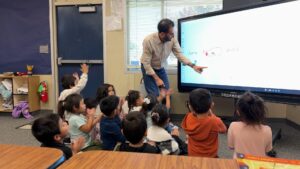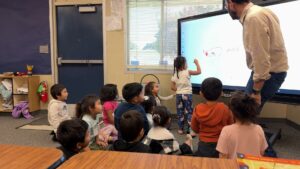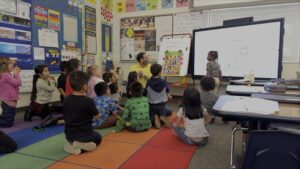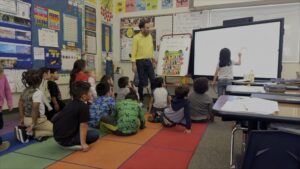Key Vocabulary Prediction
words, images and/or objects
Students predict the meanings of vocabulary words before reading and confirm the accuracy of their predictions during and after reading. Students identify context clues from the text and revise their definitions accordingly. The teacher selects vocabulary and phrases that will support understanding the reading of the text, learn definitions and connecting schema (background knowledge). It can be used with text, a video and song lyrics before listening to a musical selection.
PDF file of Key Vocabulary Prediction
When to Use
It is a priming activity before reading a text. It can also be used during the process as well as for retaining for understanding after reading the text.
The Purpose
Academic vocabulary prediction combines several essential skills: analyzing word parts (morphemes), using context clues and schema for background knowledge. This builds word-consciousness, reading comprehension and the skill to independently develop understanding of text. And it is fun to predict.
- Choose your vocabulary words for the students.
- Before reading, have students predict meaning from word roots, prefixes, suffixes, or through recognition of cognates and possible word relatives. Have them discuss their predictions (Think-Pair-Share), then write their predictions succinctly.
- While reading, students revise their predictions and make note of the context clues that helped, and how they helped each other.
- After reading, have students look up the actual definitions or provide definitions.
- Have students reflect on their process which includes considering their original predictions and the usefulness of context clues.
- To help students master these word-learning habits, have them complete this process initially daily for a week, and routinely through the year.
Early Childhood (PreK; K; 1st; second)
(Also supports ELL and Trans-Language)
With the use of images drawn by students, the students practice verbalizing words and ideas, and it supports all students to learn words in different languages. The steps are:
- Introduce a vocabulary word through an object or image. If the image is from a book, a photocopy of just the image of the vocabulary word (or a frame isolating in a picture) to focus on the exact vocabulary word.
- After students have developed an initial discussion on the word connecting with their schema, have one or two students draw the image of the word. The teacher (or a student) can write the written word next to the image.
- Go over the just introduced vocabulary word again.
- Add another vocabulary word in the same format as above.
- Go over both vocabulary words.
- Add one or several more. The first time doing three are a good number to introduce.
- In small groups or whole group, share with the students these are important vocabulary words from the text or book they will be reading. What do they predict the story will be about. The more often this is done with new books, the better the students will be with predicting.
Connection to Equity Consciousness
Analyzing the context and structure of words develops critical awareness that is essential for equity.Additionally discussions include the student’s schema which is situating learning in the lives of students.
An Example Using Written Vocabulary for Grades 2-5; Middle School; High School
The example below is text for upper elementary and higher. The format is similar for all grades and content areas.
Text
| ancestors sacred objects indigenous America’s story colonizers | knowledge history citizens advanced technology | Post the words to the left on a slide deck (virtual or in the classroom) for all students to see together. |

This Land
Excerpt from An Indigenous Peoples’ History of the United States For Young People
‘Under the crust of that part of the earth called the United States of America are buried the bones, villages, fields, and sacred objects of the first people of that land—the people who are often called American Indians or Native Americans. Their descendants, also called Indigenous peoples, carry memories and stories of how the United States came to be the nation we know today. It is important to learn and know this history, but many people today lack that knowledge and understanding because of the way America’s story has been taught.
Like most people, Americans want to think well of themselves, their ancestors, their history, and what they and their leaders do. As advanced technology makes the experiences of Indigenous peoples around the world more readily available, it is necessary that Americans learn to think more completely and more critically about their own history, because it can help them be better citizens of the world. Part of that critical thinking involves recognition that “America” is a name given to two land masses by European colonizers. indigenous peoples had, and have, words for the land in their own languages.’
Excerpt from:
An Indigenous Peoples’ History of the United States For Young People
By Roxanne Dunbar-Ortiz, published 2019





